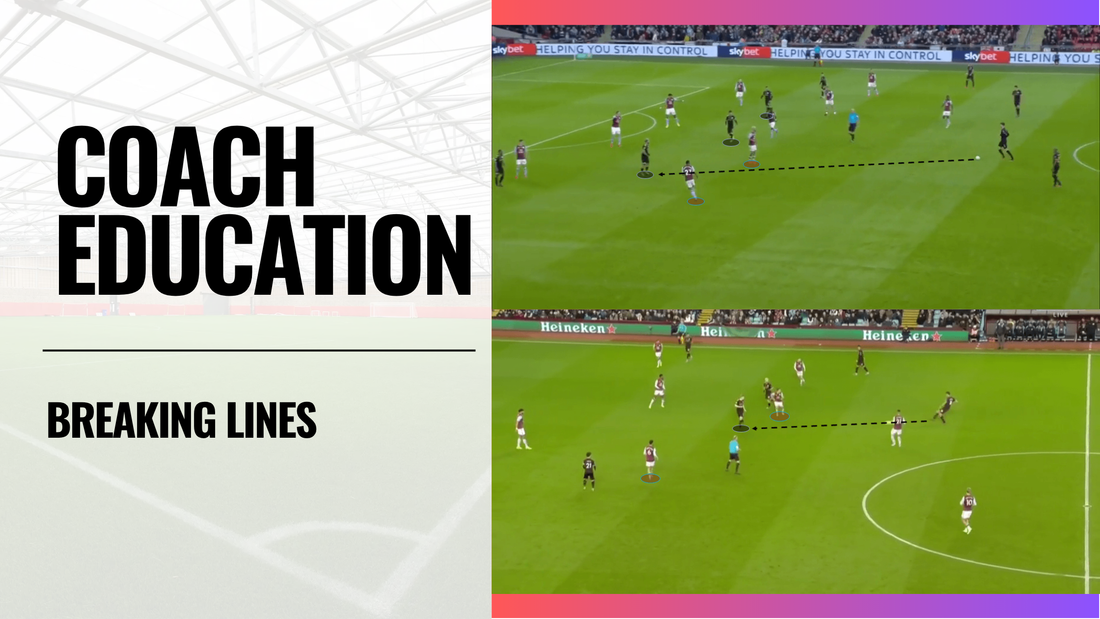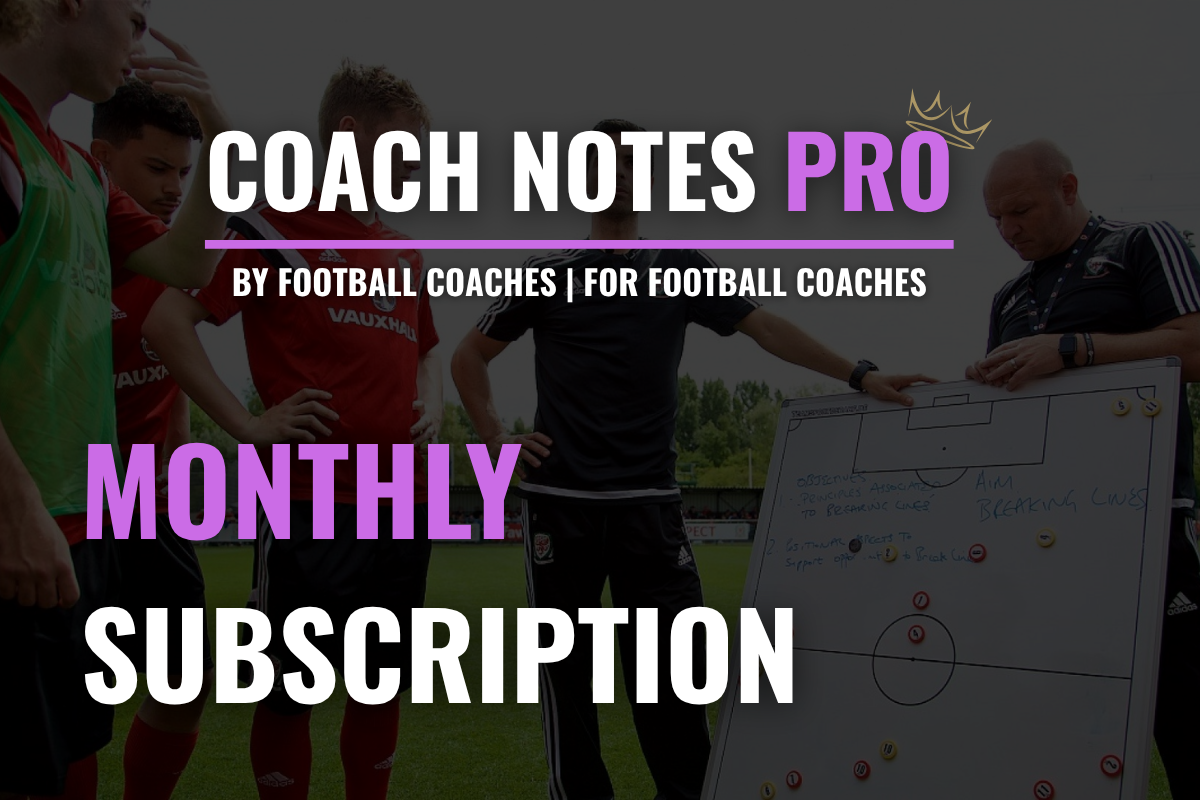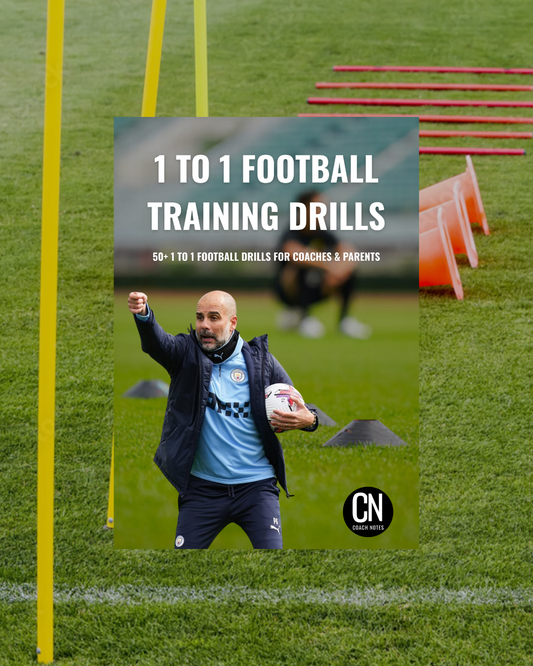
Breaking Lines - The Key to Unlocking Opposition
Share
In modern football, teams that struggle to break lines often struggle to create meaningful chances. They may dominate the ball, but their attacks feel stale and predictable. At every level of the game, breaking lines is a vital skill, one that turns possession into penetration and structure into threat.
Whether it's a clever forward pass, a sharp dribble through midfield, or intelligent movement that creates angles, breaking lines allows teams to disrupt opposition organisation and progress into more dangerous spaces.
This article explains what line breaking is, why it matters, how it’s done, and how you can coach it more effectively in training.
⚽️ What Does “Breaking Lines” Mean?
Breaking lines refers to any action that successfully gets the ball or player past one layer of the opposition’s defensive structure, typically:
- The first line (forwards pressing your defenders)
- The second line (midfielders covering space and passing lanes)
- The third line (defenders protecting the goal)
When a team breaks through one of these lines, they:
- Create overloads and space in the next layer
- Force defensive rotations or recovery runs
- Gain access to more advanced areas of the pitch
Line-breaking actions can be:
- A pass through or over a line (e.g. into a striker between midfield and defence)
- A dribble that takes a player past a pressing opponent
- A movement pattern that manipulates defenders and opens space to play into
🔑 Why Breaking Lines Is Crucial
Without the ability to break lines, teams:
- Circulate the ball but rarely create danger
- Become easy to press and isolate
- Lack depth and penetration
With effective line breaking, teams:
- Progress the ball quickly and cleanly
- Force the opponent to become reactive
- Open up attacking opportunities by disorganising defensive units
👇 How to Break Lines: Key Methods
1. Line-Breaking Passes
Passes that break lines can come in various forms:
- Short incisive passes into midfielders on the turn
- Vertical balls into the feet of a striker
- Diagonal switches into players arriving from wide areas
- Through balls between defenders
Coaching Tips:
- Teach players to scan before receiving and play with minimal touches
- Use trigger movements to create gaps for forward passing
- Train the weight and angle of passes under pressure
Tactical Examples:
- Playing through a midfield line in a 4-2-3-1 using the 10 between the lines
- Finding a winger coming infield behind the full-back in a 3-4-3
2. Dribbling to Break Lines
In systems where opponents use tight man-marking or aggressive pressing, line-breaking via dribbling can be especially powerful.
Benefits:
- Draws multiple defenders, creating gaps for others
- Unsettles tight defensive blocks
- Enables quick transitions when facing disorganised teams
Coaching Tips:
- Develop 1v1 skill work in tight areas
- Encourage body feints and direction changes
- Build confidence carrying the ball under pressure
3. Rotations and Movement
Breaking lines isn’t always done with the ball, it can be achieved by moving opposition players to open space for others.
Examples:
- A midfielder drops deep, dragging their marker and opening space for another player to receive between the lines
- Wide players rotate into the half-space, freeing room for an overlapping full-back
Train your players to:
- Recognise when their movement creates space
- Coordinate rotations with clear communication
- Time their movement to complement passing options
↕️ What Influences Line-Breaking Opportunities?
1. Opposition Shape
- Teams in a low block may offer little space between lines, dribbling and quick rotations help here
- High pressing teams create gaps, precise passing and composure under pressure are key
2. Tempo and Patience
- Breaking lines is not just about speed, it’s about knowing when to accelerate and when to draw pressure to create space
- Encourage players to play back to go forward, shifting defenders before finding gaps
3. Team Understanding
- Successful line-breaking relies on players being on the same wavelength
- Build this with repetition in training, match scenarios, and understanding of positional roles
🧠 Training Ideas for Breaking Lines
1. Positional Rondo (8v4 or 6v3)
Objective: Play through or around defenders to break into an end zone
2. Line-Breaking Pattern Play
- Build up from the back through midfield and into a front three
- Add defenders as players improve
3. Small-Sided Games with Zones
- Add scoring zones beyond each line to reward breaking into them
- Limit touches to encourage quick combinations
💭 Final Thoughts
Breaking lines is a non-negotiable part of modern football and all players, not just midfielders or playmakers, should be equipped to do it. Whether through sharp passing, confident dribbling, or intelligent positioning, coaches must build this into their training methodology.
The best teams don’t just keep the ball, they progress it. And the best players don’t just pass safely, they find the pass that matters.









